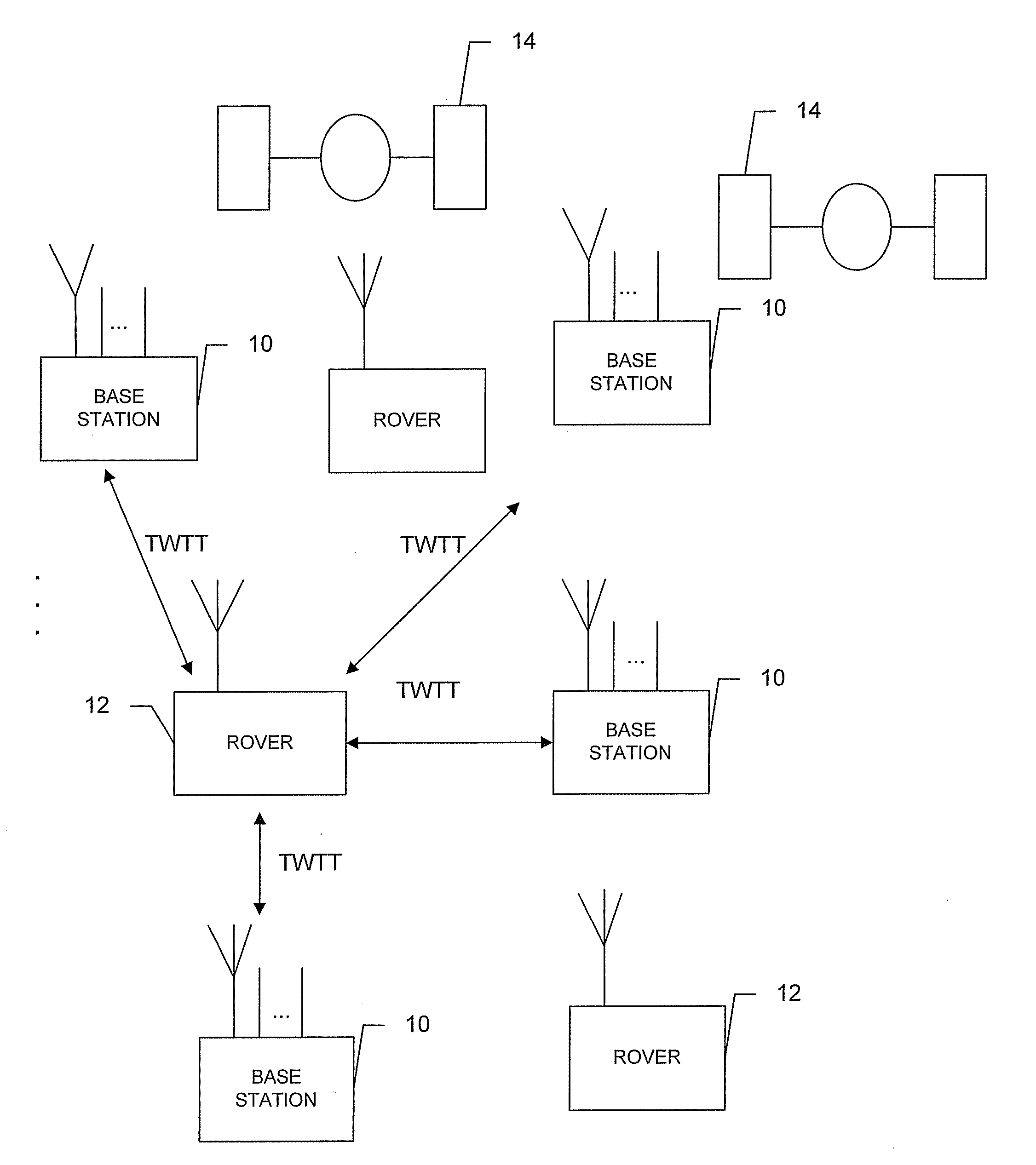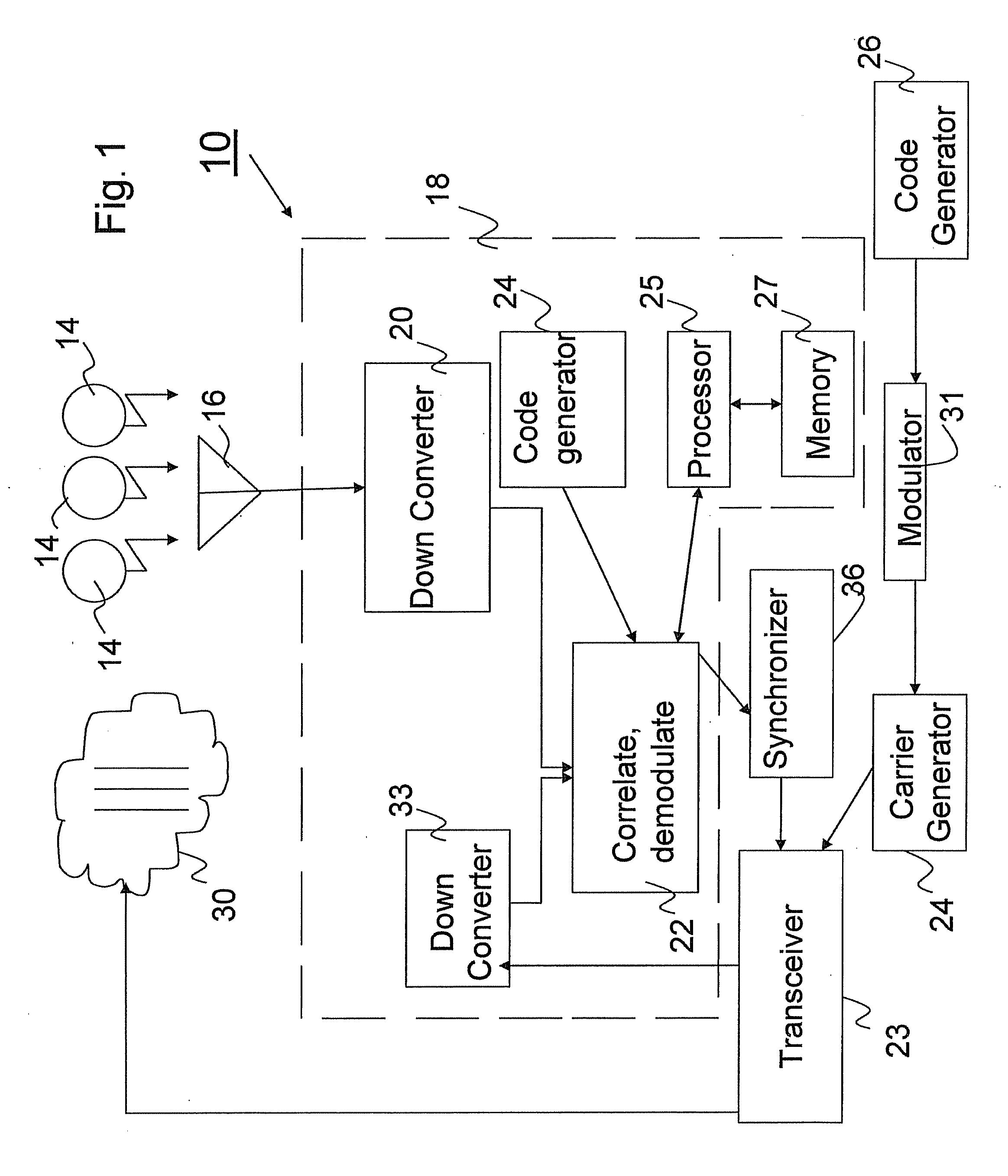System for determining position using two way time transfer signals
a time transfer signal and position information technology, applied in direction finders, instruments, measurement devices, etc., can solve the problems of degrading the solution is not suitable for some small rovers, so as to improve the geometry of the rovers' solutions and improve the accuracy of position determination. , the effect of improving the accuracy of position determination
- Summary
- Abstract
- Description
- Claims
- Application Information
AI Technical Summary
Benefits of technology
Problems solved by technology
Method used
Image
Examples
Embodiment Construction
[0020]FIG. 1 depicts a base station, generally indicated at 10, that operates in conjunction with rovers 12, one of which is depicted in FIG. 2. Both the base station and the rovers make use of the ranging signals transmitted by a plurality of Earth-orbiting satellites 14. The base station 10 includes an antenna 16 that picks up the signals from the satellites and passes them to a GNSS receiver 18. The receiver includes a down converter 20 that translates the satellite signals to an intermediate frequency. The down converter 20, a correlation and demodulation unit 22 and a code generator 24 are connected in a well known manner to synchronize carrier phase and the local codes produced by the code generator to the carrier and codes used by the individual satellites 14, and ultimately provide the position of the base station. The base station includes a processor 25 and an associated memory 27 containing software enabling the processor to perform the functions set forth above, as well ...
PUM
 Login to View More
Login to View More Abstract
Description
Claims
Application Information
 Login to View More
Login to View More - R&D
- Intellectual Property
- Life Sciences
- Materials
- Tech Scout
- Unparalleled Data Quality
- Higher Quality Content
- 60% Fewer Hallucinations
Browse by: Latest US Patents, China's latest patents, Technical Efficacy Thesaurus, Application Domain, Technology Topic, Popular Technical Reports.
© 2025 PatSnap. All rights reserved.Legal|Privacy policy|Modern Slavery Act Transparency Statement|Sitemap|About US| Contact US: help@patsnap.com



